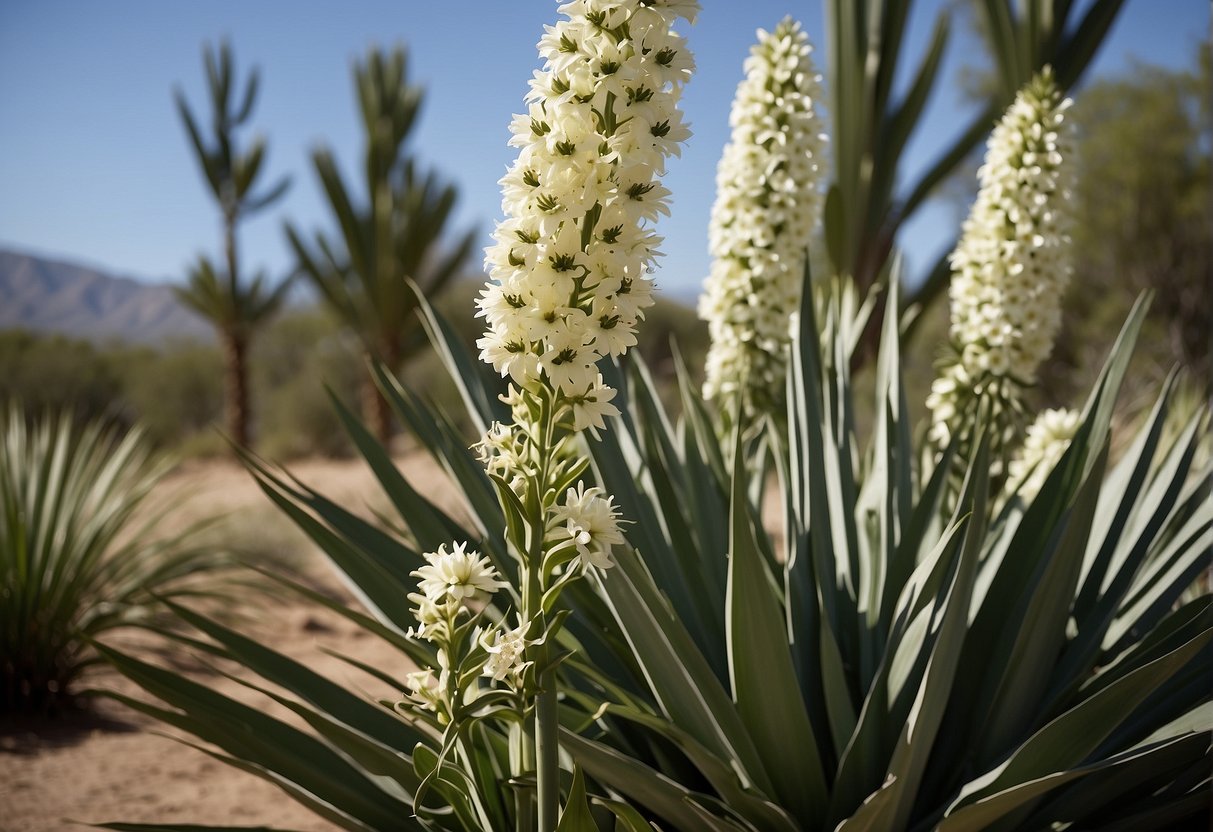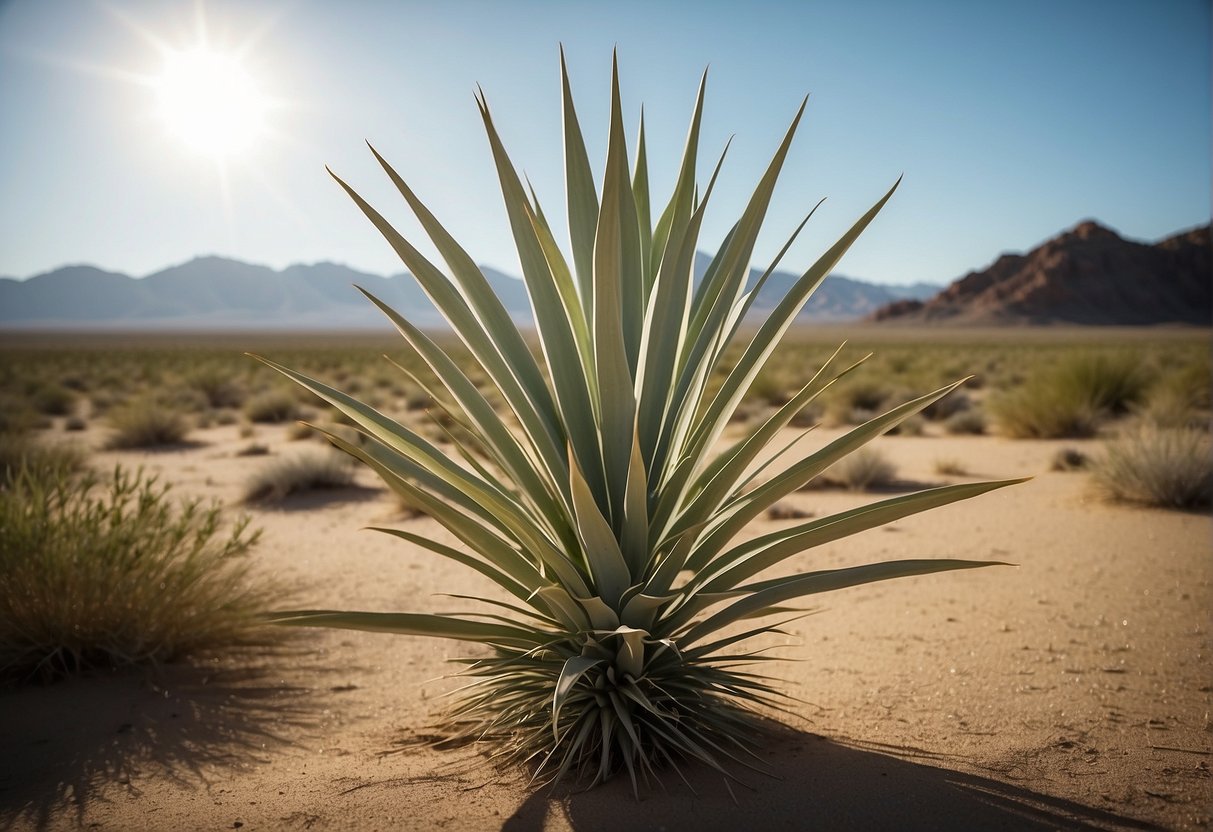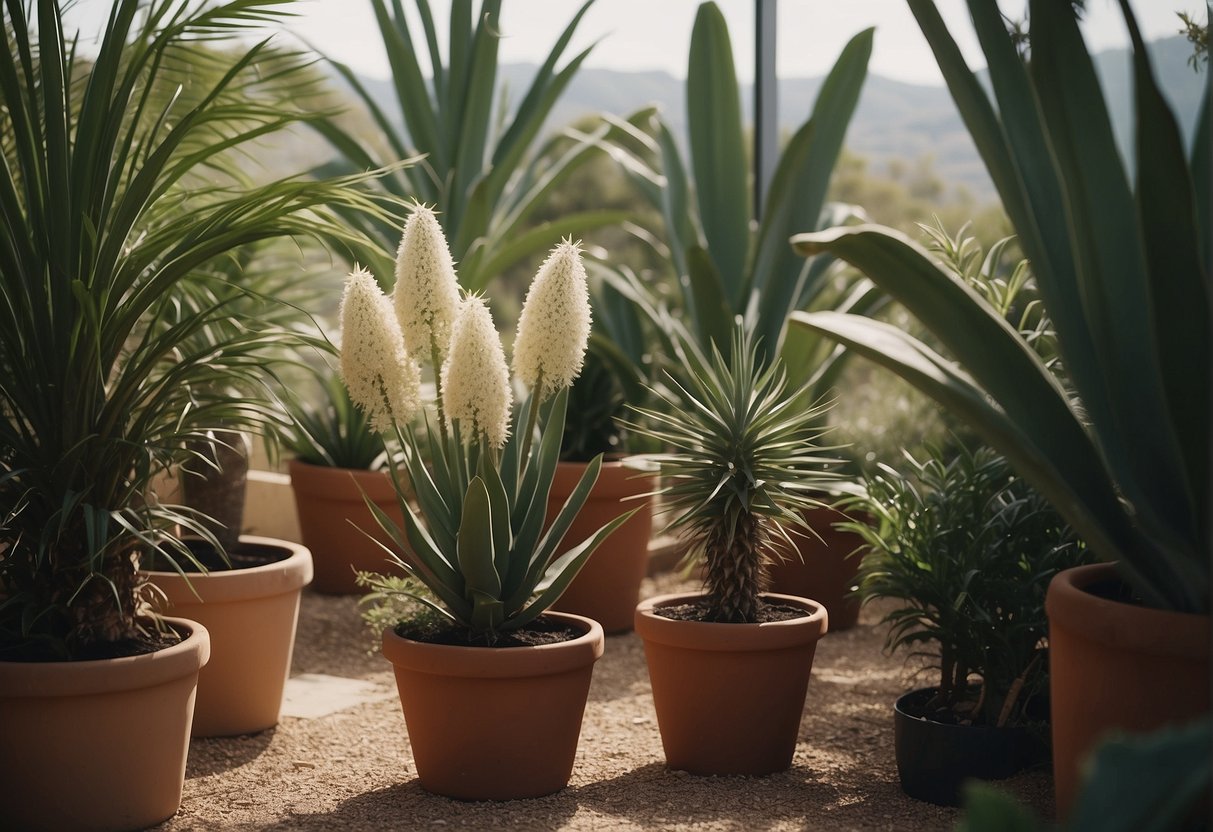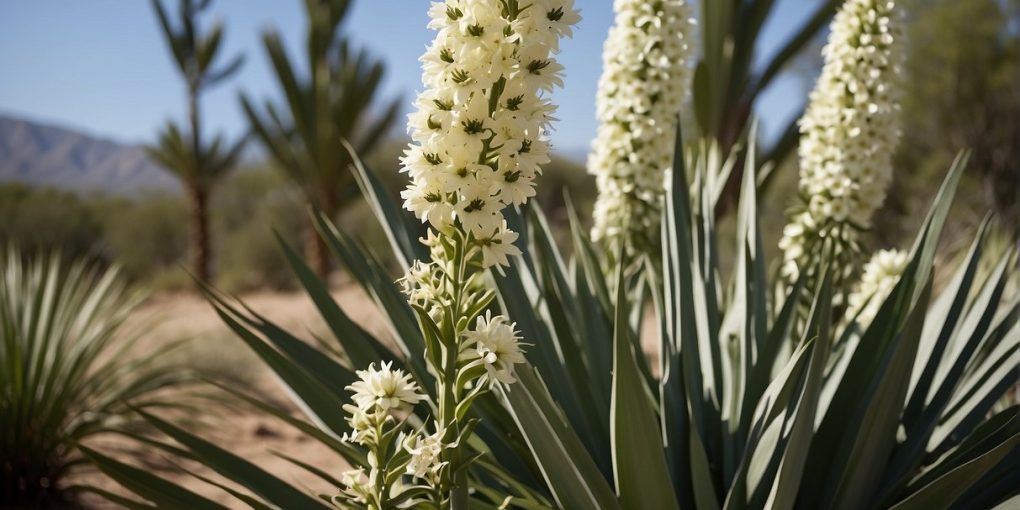How Tall Do Yucca Plants Get: Unveiling Their Growth Potential
Yucca plants are favored by many gardeners for their low-maintenance requirements and bold appearance, featuring sword-like leaves and a noticeable presence. Originating from dry areas, these resilient perennials are versatile, thriving in different weather conditions and suitable for both indoor and outdoor cultivation. The size of yucca plants can differ significantly across different species.

Some yucca species stay relatively small, reaching heights of only 2 to 3 feet. Conversely, larger varieties like the Yucca aloifolia can tower up to 8 to 12 feet, especially when they send up their impressive flower spikes. When grown indoors, the size of yucca plants is often limited by the size of the pot and the conditions of the indoor environment. With the right care and time, even indoor yucca plants can grow to be quite tall.
Key Takeaways
- Yucca plants are adaptable and can be grown indoors or outdoors.
- They vary in size with some species reaching up to 12 feet tall.
- Indoor yucca plant growth is often limited by pot size and indoor conditions.
Understanding Yucca Plants

Yucca plants offer a diverse range of species with varying heights and adapt well to different environmental conditions, making them a valuable addition to your landscape. They are known for their distinctive appearance and resilience.
Species Variety and Habitats
Yucca species are numerous, with over 40 species native to the Americas. Some well-known species include the Yucca elephantipes, which thrives in Mexico and Central America, the iconic Joshua tree (Yucca brevifolia) residing in the Mojave Desert, and the Yucca filamentosa, commonly found in the southeastern United States. Habitats range from coastal sands to arid deserts, reflecting the plant’s adaptability.
-
Common Yucca Species and Habitats
Yucca Species Habitat Yucca elephantipes Mexico and Central America Joshua tree Mojave Desert, US Yucca filamentosa Southeastern US Spanish bayonet Southeastern US, Caribbean Beaked yucca Texas, New Mexico Yucca gloriosa Southeastern US, sand dunes
Botanical Characteristics
Yuccas are easily identified by their rosette form and sword-shaped, spine-tipped leaves, which are often green to blue-green. Their woody stems may be singular or branching, culminating in cream to white flowers that bloom on tall flower stalks. Some species develop edible parts, including fruits and flowers.
- Distinctive Features
- Leaves: Sword-shaped, spine-tipped, and narrow
- Flowers: Typically cream or white, blooming on tall stalks
- Stems: Woody, sometimes branching
Optimal Growing Conditions
To thrive, yuccas require full sun and well-draining soil. They are perennial plants that tolerate a range of soil conditions, from sandy to rocky. These drought-tolerant plants prefer low humidity and can endure temperature extremes, making them suitable for various landscapes.
- Growing Conditions Checklist
- Sunlight: Full sun
- Soil: Well-draining, sand to rocky substrates
- Water: Drought tolerant; infrequent watering once established
- Temperature: Can withstand a wide range
Environmental Impact and Adaptations
Yuccas are masters of survival, having developed adaptations like thick, waxy leaves to reduce water loss and deep root systems to access groundwater during droughts. Their resilience helps prevent soil erosion and provides habitat for local wildlife, with some species like the Joshua tree being crucial for their ecosystem.
- Adaptations to Environmental Stress
- Thick, waxy leaves
- Deep root systems
- Drought and temperature tolerance
Yucca Plant Significance
Yucca plants are not only important ecologically but are also used as ornamental plants. Their striking forms and flower color make them attractive in garden landscapes. The fragrance of yucca flowers adds to their appeal. They also have cultural significance to indigenous peoples, with various parts being used for food, medicine, and crafting materials.
Yucca Plant Growth and Maintenance
Yucca plants are admired for their striking appearance and resilience. Understanding their growth habits and care requirements will ensure they thrive in your environment.
Typical Height and Growth Rate
Yucca plants typically reach heights of 2 to 30 feet, depending on the species. Growth rates can vary, with some species growing more than a foot per year. Yucca gigantea, for instance, can achieve substantial height relatively quickly.
Propagation Methods
Propagating yucca plants can be done through seeds, cuttings, or division. When using seeds, you should sow them in a well-draining mix. Cuttings or offsets can be taken from mature plants, allowed to dry for a few days to form a callous, and then potted in soil.
Pruning and Maintenance
To maintain your yucca plant’s appearance and health, prune dead or damaged leaves and cut the stalk once flowering is finished. This is a low-maintenance plant, tolerating some neglect, but proper pruning keeps it looking its best.
Watering and Fertilization
Yucca plants require minimal watering and are susceptible to overwatering. Allow soil to dry out between waterings. Fertilization should be light; a balanced, water-soluble fertilizer applied annually in the growing season is adequate.
Soil and Potting
Yucca plants need well-draining soil, preferably with sand or perlite added. For potting or repotting, choose a container with ample drainage holes to prevent root rot. The ideal potting mix should contain potting soil and perlite or similar materials to ensure drainage.
Dealing with Common Problems
Yucca plants can face issues with pests, such as aphids, scale insects, and mealybugs. Regular inspection and prompt treatment with insecticidal soap or neem oil can manage infestations. Be cautious of excessive water retention in the soil, which may cause root rot.
Yucca Plants in Landscaping and Indoors

Yucca plants serve as striking additions to both external landscaping and as indoor ornamental plants. Proper placement and care are essential for their vitality and growth.
Outdoor Placement and Zones
Outdoor yuccas thrive in USDA Zones 5-10, showcasing their ability to tolerate a range of environments. For a robust perennial display, the spineless yucca is a popular choice in warmer climates. Ensure good drainage by selecting an elevated or sloped site and using well-draining potting soil.
- Zones 5-10: Ideal for yucca growth.
- Drainage: Key to prevent root rot.
Indoor Yucca Plants as Houseplants
As a houseplant, yuccas demand bright light and infrequent watering. The spineless yucca, due to its minimal sharp edges, is particularly suited for the indoor setting.
- Bright Light: Indirect sunlight is best.
- Watering: Allow the soil to dry out between watering sessions.
Choosing the Right Container
Select a container with drainage holes and use well-draining potting soil to prevent waterlogging. Given the potential size of a mature yucca, choose a sturdy pot to accommodate your yucca’s growth.
- Drainage: Critical to avoid waterlogged roots.
- Sturdy Pot: To support your yucca’s mature size.
Yucca Plants and Design Aesthetics
You can incorporate yuccas into your design for a bold structural element. The giant yucca and yucca gloriosa add dramatic flair to gardens, while the yucca brevifolia can give an impression of a desert landscape amidst traditional indoor plants.
- Bold Statement: Yuccas’ structural design stands out.
- Variety: Select a species that complements your aesthetic.
Wildlife Involvement and Yucca Symbiosis
Yuccas engage in a unique symbiosis with yucca moths, which are the main pollinators for these plants. Though less relevant indoors, this partnership is crucial for seed production in outdoor settings.
- Yucca Moths: Vital for yucca pollination.
- Seed Production: Depends on wildlife pollinators.
Frequently Asked Questions
Yucca plants vary in size, but indoor varieties generally have a shorter stature due to space constraints and pot size. Understanding how to care for your yucca can promote optimal growth and prevent common issues.
What is the average height for indoor varieties of yucca plants?
Indoor yucca plants typically reach a height of 2 to 3 feet, but some species may grow taller under the right conditions.
What factors affect the growth rate of yucca plants?
The growth rate of yucca plants is influenced by several factors, including light exposure, watering habits, soil quality, and temperature.
How do I properly care for a yucca plant during the winter months?
During winter, ensure your yucca plant receives enough light and reduce watering to prevent root rot, as the plant’s growth slows down in cooler temperatures.
What are the common issues faced with indoor yucca plants and how can they be addressed?
Common issues with indoor yucca plants include overwatering, poor drainage, and lack of sunlight. Address these by adjusting your watering schedule, ensuring proper drainage, and placing your plant in a well-lit area.
Can yucca plants be effectively pruned to manage their height?
Yes, you can prune yucca plants to manage their height. Remove any dead or damaged leaves, and you can cut back the main trunk if it becomes too tall.
What should be considered when planting yuccas in proximity to buildings?
When planting yuccas near buildings, consider the mature size of the species to ensure it won’t cause damage to structures with its robust root system or by growing too close to walls or foundations.



